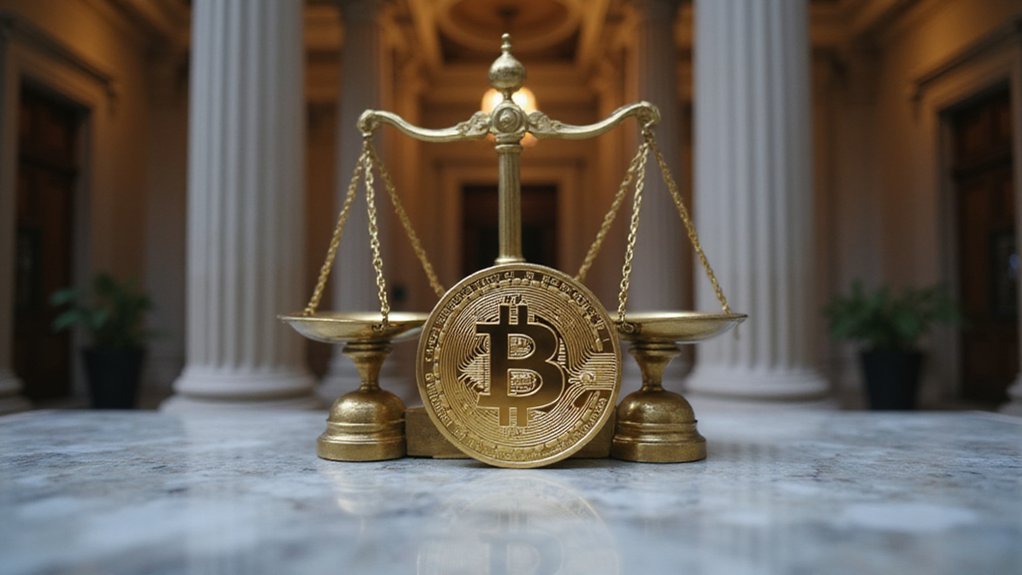While the Federal Reserve‘s authorization of US banks to provide Bitcoin custody services might seem like just another regulatory adjustment, it represents a seismic shift in how traditional financial institutions approach cryptocurrency—transforming what was once the exclusive domain of specialized crypto firms into a competitive battleground where JPMorgan Chase could theoretically safeguard the same digital assets that Coinbase has been protecting for years.
The regulatory framework, rather than imposing novel supervisory demands, reinforces existing compliance structures while adding cryptocurrency-specific requirements. Banks must maintain exclusive control over private keys (ensuring customers cannot unilaterally move assets), adhere to Bank Secrecy Act provisions, and implement rigorous AML and KYC protocols.
The irony is palpable: institutions that once dismissed Bitcoin as “rat poison squared” must now master cryptographic key management with the same diligence they apply to traditional vault security.
This approval effectively eliminates the regulatory ambiguity that previously confined crypto custody to specialized firms, creating a pathway for mainstream institutional adoption. Banks can now integrate digital asset safekeeping with existing financial services, potentially offering clients extensive portfolios spanning traditional securities and cryptocurrency within familiar regulatory boundaries.
The competitive implications are significant—crypto-native custodians suddenly face competition from institutions with established client relationships and regulatory expertise.
Risk management requirements mirror those of conventional banking products, though with cryptocurrency-specific considerations. Banks must implement governance frameworks addressing market volatility, conduct continuous blockchain integrity assessments, and maintain staff with specialized technical competence.
The regulatory emphasis on cybersecurity and secure key management reflects the unique operational risks inherent in digital asset custody.
The institutional adoption catalyst this approval provides cannot be overstated. Traditional financial institutions previously hesitant to engage with cryptocurrency now have regulatory clarity and competitive incentives to develop crypto-related products.
This legitimization should theoretically stabilize crypto markets by introducing trusted custody frameworks, though whether institutional participation will actually reduce Bitcoin’s notorious volatility remains an open question. The underlying network’s Proof of Work mechanism, which consumes approximately 112 terawatt-hours annually and requires significant computational resources for transaction validation, continues to raise environmental concerns that banks must now navigate as they enter the custody space.
The transformation from regulatory hostility to cautious acceptance suggests a broader shift in the U.S. financial landscape, where cryptocurrency custody becomes not an experimental venture but a standard banking service competing on traditional metrics of security, compliance, and client service.









